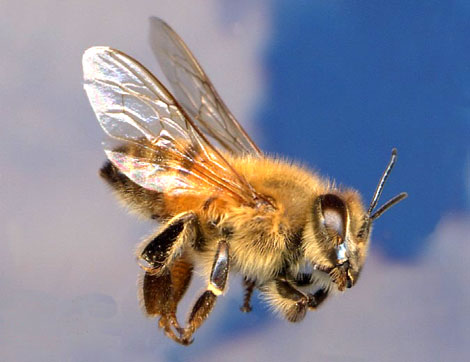Speciation: An Evolutionary Process – Make Up Module
Speciation – The evolutionary process in which new biological species arise.
PRE-LAB
- Read the lab unit, pp. 33-40. NOTE: Activity 1 – Procedure I (p. 36-37) will be done during the In-Lab meeting, but please read the whole unit ahead of lab.
- General Background Information
- Activity 1 – Procedure II: Micropippetting and gel electrophoresis
- View the following video and animation (make sure to review the lab manual, pp. 38-40):
Gel Electrophoresis – animation
Instructions for loading an agarose gel – video (mixing the same is not as important with our samples)
- View the following video and animation (make sure to review the lab manual, pp. 38-40):
- Speciation – View the following:
- NOTE: Be prepared to have the metric ruler (cm/mm) from the back of your lab manual and a laptop/tablet screen that is at least 12 inches wide (~30.5 cm) for the In-Lab meeting (see below)
The Roles of different bees
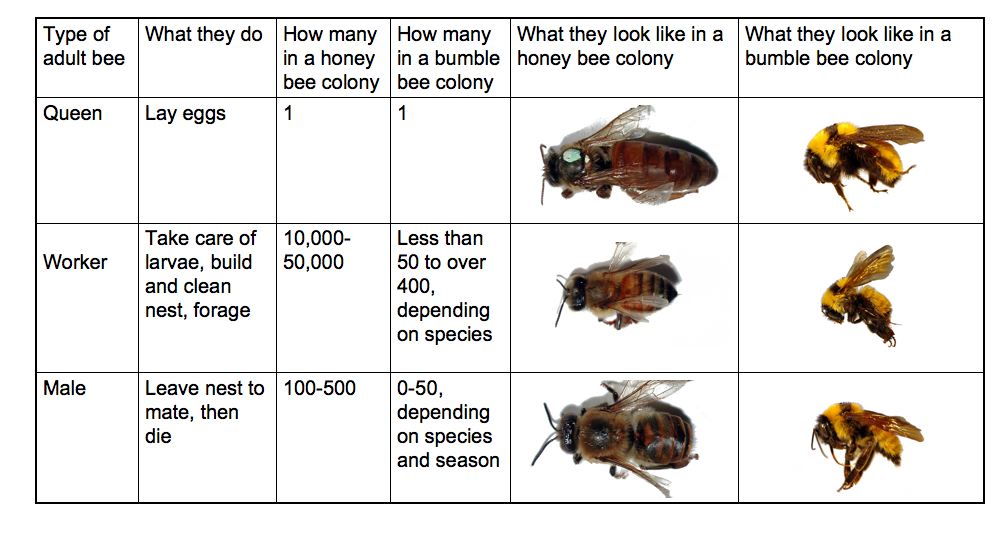
IN-LAB
Morphological Characteristics – Activity 1 – Procedure-I: (p. 36-37)
- Download your assigned “Group” PDF file (see below) that includes 36 Bee wing pictures. It is important that you are using a laptop/tablet screen that is least 12″ inches wide (~30.5 cm). This is important so that you can see and measure the enlarge whole bee wings viewed in actual size 100% size.
Bee Wing Pictures
Hive 1 – Group 1 Hive 1 – Group 2 Hive 2 – Group 3 Hive 2 – Group 4 Hive 3 – Group 5 Hive 3 – Group 6 - VERY IMPORTANT –> Open the file and download it to your computer. Check under “View” in the PDF menu to make sure that you are viewing at “Actual Size” or “100%”.
- Use the clear metric ruler (cm/mm) included in the back of your lab manual.
- Study the wing diagram to see how to position the ruler parallel to the wing length to determine the length from the notch near the joint to the longest point on the flattened wing. Do not angle the ruler to connect the notch to the longest part of the wing. You may need to rotate some of the images for ease of measuring.
- View this Video on how to measure the bee wing images.
- You will need to CALIBRATE the image on your computer screen to be the same size as your other group members. Using the wing diagram on the first page of wing pictures, measure the length of the horizontal line with arrows. Compare your measurement with all your group members. If the size of the line is not the same, you will need to adjust the size of the image to match one another. Your standard size should be somewhere between 16.0-17.5 cm. Choose a measurement you can all agree upon (ex. 16.5 cm).
- As a group, divide the wings to measure evenly between each student in your group. If you have 4 group members, each person should measure 9 different wings. If you are working alone, you will need to measure all 36 bee wings. There are 12 Known African wings, 12 Known European wings, and 12 Unknown Wings. You will be comparing the length of unknown wings to the other two groups of known bees.
- Record your group data and calculate the average wing lengths on page 37, Table 3-2 in your lab manual.
- Graph the data. Use the Bee Wing Length Graphing Google Sheet in your Group folder. If you are working alone, you can use this Downloadable Excel Spreadsheet.
- Video on entering data in the Graphing Excel (or Google) Sheet. The video refers to using an Excel template, but we found the transfer of the Excel sheet to work on in Google sheets does not keep all the settings in our template. Entering the data in the the provided Google Sheet template is the same.
Molecular Characteristics: (p. 38-41)
In lab you would have run DNA Electrophoresis using samples of mtDNA from bees found in your assigned hive.
Equipment:
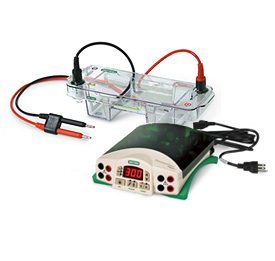
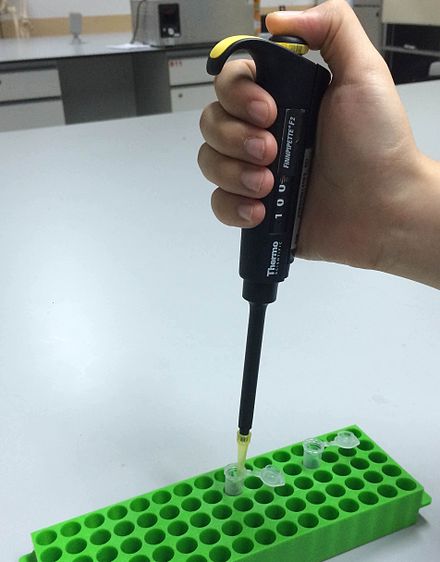
The Electrophoretic Process – You should have viewed the electrophoresis simulation as part of your pre-lab.
Resulting stained electrophoretic gel images
Compare your morphological data with the corresponding mtDNA analysis.
As a group, be prepared to present your findings to the class. What can you conclude about the bees in your hive? Explain your supporting evidence. What course of action do you suggest to the Beekeeper of this hive?
What economic implications are at stake making appropriate hive management so important?
(Before leaving Lab – your TA will review the methods for random sampling and measuring leaf surface area for Lab Unit 4.1 fieldwork due in the next Pre-Lab. Fieldwork is required for this activity)
POST-LAB
- Take a screen shot of your graph and gel (from above) – include your group explanation of what this means and what your advise would be to the bee keeper in a Word doc. Submit this in Moodle (group work – one submission per group).
- Answer the questions #1-9 on pages 43-46 (group work – one submission per group).
- Need to start on Lab 4 Leaf Herbivory Field Data Collection/PRE-LAB assignment (see assignment box below). This requires outdoor fieldwork and data collection that you will bring to the next IN-LAB class. (Individual work)
Bee Background Information:
- Responding to the Introduction of Africanized Honey Bees (AHB)
- Host-Shifts & Honey Bees: Lessons from COVID-19
- Africanized Honey Bees Some Questions and Answers (NC State Extension)
- The African Honey Bee – 3 papers
- Africanized Bees in Florida
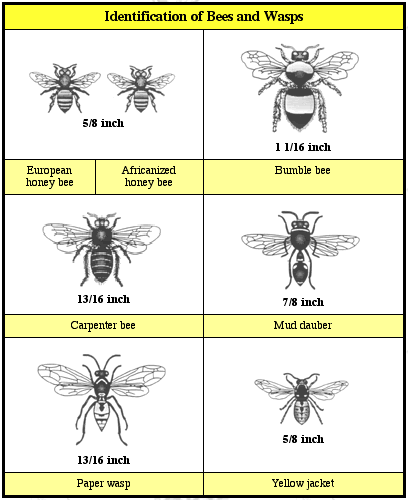
Speciation Information:
Giraffe Genetic Secrets: Four Species of Tallest Mammal Identified
